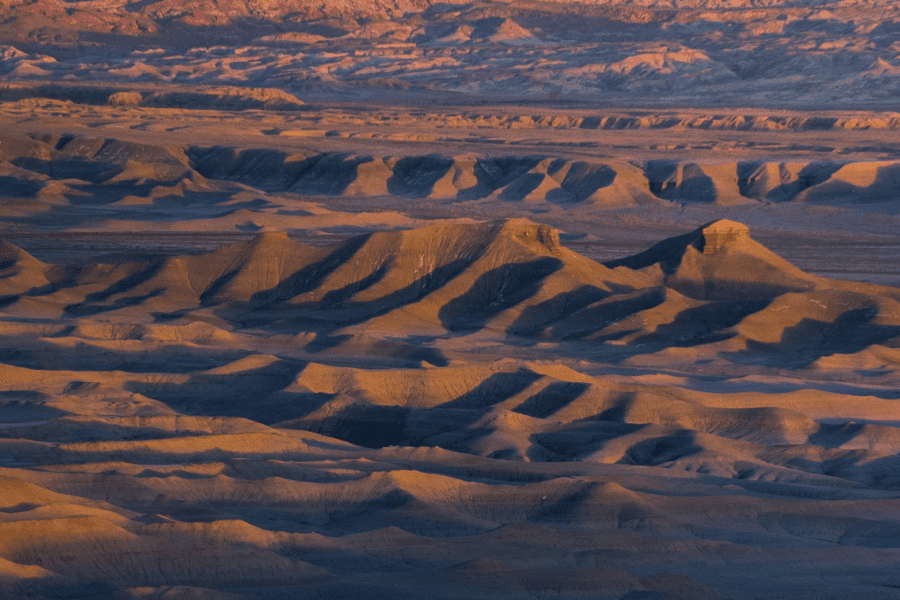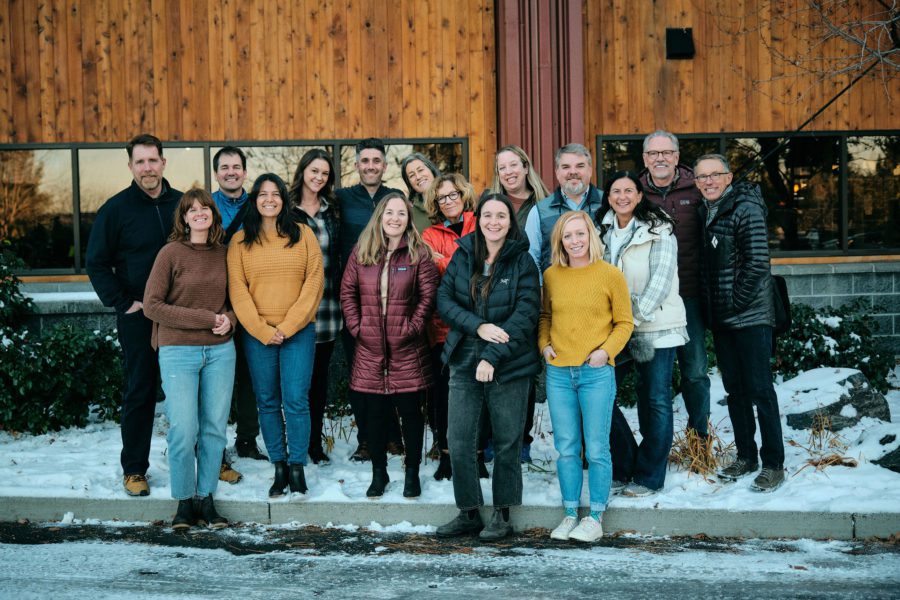As a part of our ongoing commitment to embed Justice, Equity, Diversity, and Inclusion values into all areas of The Conservation Alliance, we would like to share a third and final update on our work during 2022. Here’s a link to our previous update from 2021.
As a team we have had some successes and also some stumbles along the way. We know that the path forward for this work is not linear, and that it is something that we must actively prioritize both in our organization as a whole, and as individual staff members who have a responsibility for building relationships and shaping programs. Keep reading for an update about how each of our program areas have evolved in 2022, as well as an update on our Executive Director search.
One area that has provided consistent growth and feedback has been our continued work with Marcelo Bonta of J.E.D.I Heart. We have regularly met with Marcelo as a full team with a goal of integrating our JEDI work into all areas of our organization’s annual plan. This work is ongoing, must be undertaken with humility, and with an understanding that it is not always going to be comfortable, nor should it be. These challenges and successes over the past year are informing our future work and approaches.
Update on the Executive Director Search from Board Member and Search Committee Member Carol Shu, The North Face: When the Search Committee kicked off the executive director search process we asked our community for recommendations for search firms that had experience with inclusive hiring and their own commitments to JEDI. We had conversations with five firms and Kittleman & Associates became our partner for many reasons, especially their record of placing diverse candidates in leadership positions at non-profit organizations and their understanding of our focus on an inclusive search. We crafted the position guide to clearly outline The Conservation Alliance’s commitment to JEDI and the opportunity for the new executive director. We sought job boards that were inclusive and reached diverse communities across our sector and took a very thoughtful and intentional approach to this search. Along the way, Marcelo Bonta guided us in how to ask expansive questions and be more cognizant during interviews for authentic perspectives and experiences. Our next step is to compile our learnings from this search so that we can continue to build a hiring process that supports our vision of a successful conservation movement, which we believe is a coalition of everyone.
Executive Director Update
Our new executive director, Nicole Rom, brings over 10 years of experience advancing diversity, equity and inclusion (DEI) efforts at the organizational, programmatic, and individual level. She successfully incorporated DEI values and operationalized it across an organization through an Equity Strategic Action Plan. Before departing her most recent workplace, she ensured their strategic plan centered equity and anti-racism in order to achieve its climate justice mission. She’s looking forward to building on the progress, learnings, and relationships fostered through The Conservation Alliance’s JEDI work. In 2023, we will invest in our culture, systems and processes in order to strengthen our infrastructure, team collaboration, and impact.
Program Area Updates
Grant Program: One area that we have worked towards in 2022 is strengthening our commitment to outreach and relationship building with the diversity of organizations working to protect wild places and open spaces. We are on track to award 31% of our grant fund to groups led by historically racially excluded people, which is an increase from 24% from 2021. This intentional increase in funding comes from knowing that success happens when a diverse coalition of voices and perspectives comes together and champions solutions that balance the best interests of the land and water, wildlife, and people.
Our Confluence Program relationships have allowed us to expand our network to include communities we weren’t previously connected to. For the Confluence Program’s second year, we hired a new advisory committee representing different professional backgrounds, and racial, geographical and gender diversity. Insights gained from this committee have been instrumental in staff learning and program development. The committee narrowed the 2022 Confluence funding criteria to focus on providing direct support to small groups with an annual operating budget less than $500,000, and are working to address the social and environmental challenges in their communities. We have continued our commitment to remove barriers to funding by not requiring a 501c3 or charitable status for groups applying for Confluence Program funding.
Lessons Learned: We didn’t clearly communicate with current grantees and Confluence applicants in 2021/2022 how funding decisions are made and eligibility timelines. As a result, one important partner working on an Indigenous-led conservation project missed an opportunity to apply for funding. This was not intentional on our part, but the impact of a missed grant opportunity for this group was significant. We should always be centering our partners and communicating with them about eligibility and timelines, and we failed to do so.
We also learned a lesson about our own internal capacity limits. In its first year, the goal of the Confluence Program was to provide significant financial, communications, and advocacy support to the grantees. With our small team, and the various needs of each group, we have had different levels of success being strong partners we hope to be in each area. Specifically, we committed to developing video content for each of the four groups and we did not follow through. In 2022, we are being more realistic about the level of support we can provide beyond the financial commitment, and we will identify specific opportunities to meet the unique needs of each group.
Membership
We have improved our industry representation in renewable energy and tech, where there is a greater representation of brands that are led by people of color, and have worked with leaders from those industries to establish a network that can initiate connections to new member contacts. One key opportunity going forward is to center people of color in our recruitment committees and member engagement in grantmaking and advocacy opportunities.
Communications
One communication goal has been to integrate our JEDI values into two major brand projects – a communications framework that updates the way we talk about our work and website redesign, which will launch in early 2023. These projects have an enormous impact on the way that people experience The Conservation Alliance and we know that these large scale projects are an important place for our JEDI work to come to life.
From the beginning of our communication initiatives, we’ve sought to meet with a variety of voices to get input and feedback on how people experience our organization. Taking feedback from brand workshops, we crafted language to match the way we have come to talk about our work internally. With the new framework in hand, we began the website development phase. It’s been a major goal to bring forward the people that are involved with our work as a way of showing all the different types of people and industries that make up our alliance. This is an ongoing process, and we are continuing to seek inclusive imagery that doesn’t showcase one “type” of person, but instead celebrates the diversity of people who are a part of our coalition to protect wild places and outdoor spaces.
Lessons Learned: It’s been a learning experience as we work to shift the language we use to talk about our work. We’ve found that it takes slowing down and stepping back to assess our word choices, and that getting feedback from outside sources is necessary. We used to solely focus on wild places, but we now understand that a just, equitable, diverse and inclusive conservation movement must recognize that the definition of wilderness and wild places excludes many from seeing themselves as conservationists. All of the close to home outdoor places that are vital to communities of all kinds are excluded when only speaking of wild places. As a result, we have shifted our language to speak about “wild places and outdoor spaces” as a way to acknowledge this truth. Additionally, through our brand workshops, we were able to get insight about how the way we present our organization could create a barrier to the inclusive vision we are actively working to cultivate.
Operations
Two major goals for our operations JEDI plan were around hiring and vendors. We wanted to diversify the channels through which we posted and recruited potential new team members, and create a more equitable interview process. We solicited advice from both internal and external stakeholders to gather information about where we should be posting our positions to recruit the best talent, and were able to exponentially increase the number of eyes on our postings. We also worked to incorporate more JEDI language and foster more inclusivity in our job descriptions and we increased the emphasis on discussion around JEDI during job interviews. As a result we saw a greater diversity of candidates in our candidate pool and heard more lived and professional experiences.
Our recent DC Fly-in was a great beta test for our new vendor initiatives. We are striving to patronize as many local vendors as possible, as well as making sure we utilize female and BIPOC-owned businesses whenever we can. We used two small, local, female-owned restaurants for catering, a BIPOC-owned business for our happy hour supplies, and a local BIPOC-owned florist for some thank you gifts. We look forward to continuing to support local, female and BIPOC-owned businesses in the future.
Advocacy:
We are currently working with member company Bank of the West to produce a number of video pieces that promote our priority campaigns and our grantee’s conservation work in local communities. In collaboration with TCA staff and our partners on the ground, Bank of the West chose to elevate our grantees, Monumental Shift and Nuestra Tierra for their work on the Castner Range campaign in Texas. Bank of the West also worked with TCA to partner with United Tribes of Bristol Bay and the Stop Pebble Mine campaign. The videos will roll out in 2023 and will undoubtedly have a huge impact on policy outcomes and will help elevate the voice of excluded and marginalized communities and campaigns.
In September 2022, TCA traveled to DC with 11 member companies and our allies in the Castner Range Coalition. The event was a huge success. TCA and our member companies were honored to work in coalition with Angel Pena and Gabaccia Moreno to elevate Castner for the Department of Interior, congressional leaders and the White House. You can find out more here.
Lessons Learned: While we made progress this year, we have a long way to go to better understand how to be a true ally and partner to campaigns led by people of color. Our focus on relationship building is the right one but we need to spend more time to truly create space for non-transactional connections with our grantees and partners.
Closing
This past year has been full of activity and change at The Conservation Alliance. As we begin a new chapter for the organization with a new executive director, an evolving team, we stand committed to carrying forward the progress made and implementing the learnings that we have gained to become a more just, equitable, diverse and inclusive organization. As a staff and board, we are invested in this collective path forward. We know that while we have made some progress, we are actively learning and adapting to embrace and implement the knowledge we continue to gain along the way.




